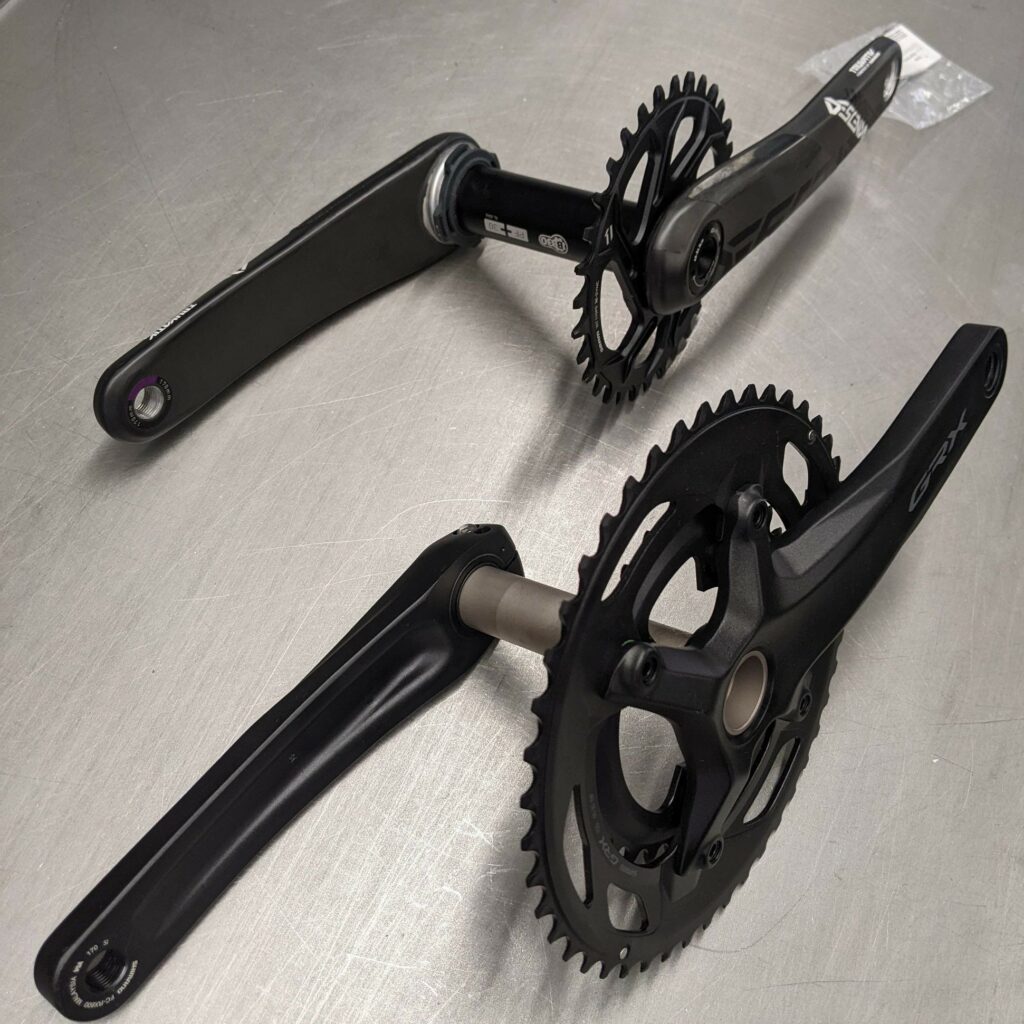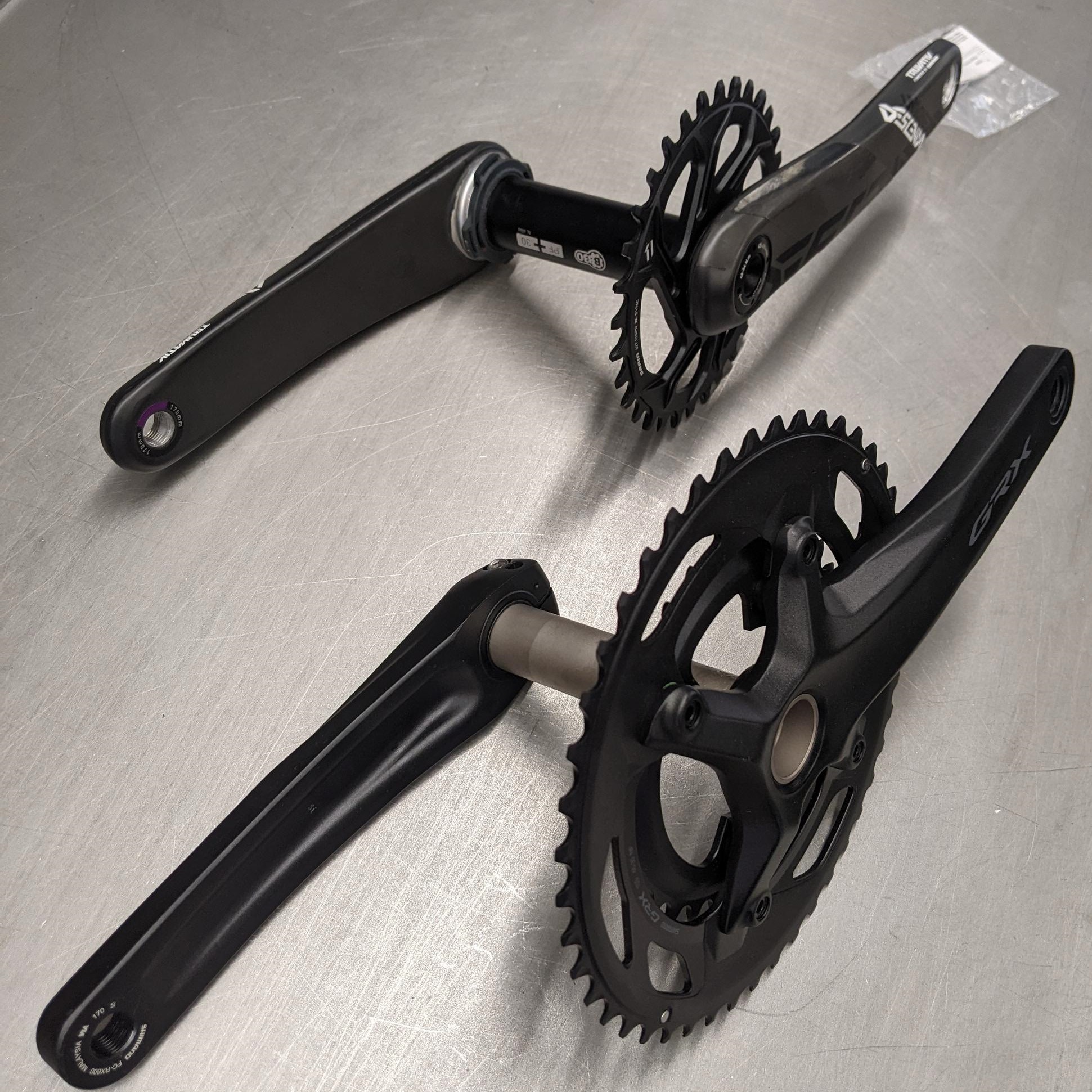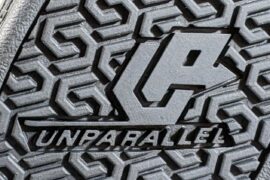Gary’s legs are shorter than average. He’s had a feeling that his cranks have been too long, but changing cranks is expensive, so how do you find out the correct length cranks for your legs and your bike and your riding style? Gary hasn’t done any actual science or power meter time trial tests, but he has tried a few different crank lengths. Read on to see what he has found so far.
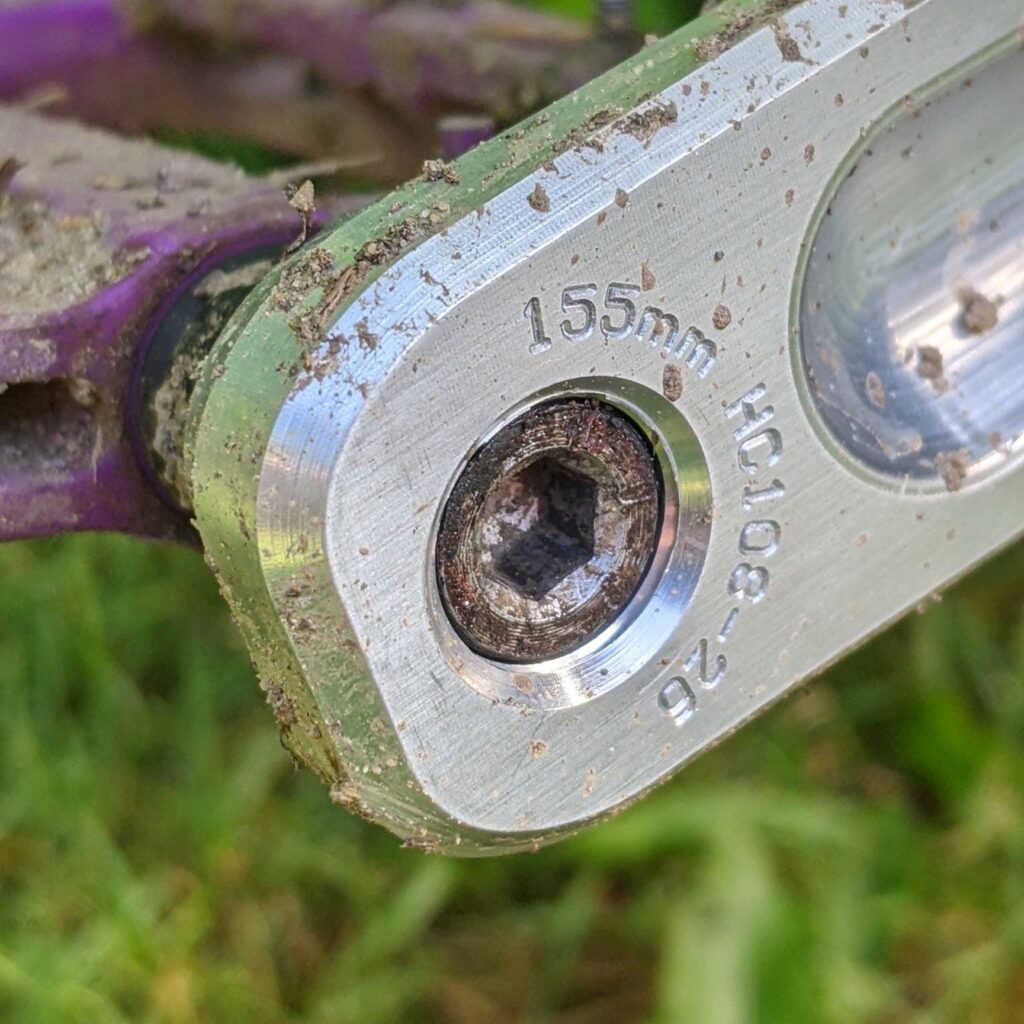
I’ve known for ages that my legs are too short for my height. Maybe I’m of the genus Northern European Hobbit. And I’ve also wondered for ages why cranks are only commonly available in 165, 170, 172.5 and 175mm lengths (a total difference of 6%), while the leg length between adult cyclists will vary by well over 15%.
Decades of experience watching other riders makes me think that the standard length cranks that commonly come supplied on most bikes, 172.5mm on road and 175mm on mountain bikes, are best suited to people who are over 6ft tall. This is backed up by stories such as “this tall geezer used 165mm cranks for his hour record” and “track cyclists always use shorter cranks” and even “downhill mountain bikers always use the shortest cranks they can get hold of”.
Even though 180mm cranks are available, Chris Froome with his super-long legs chooses 175mm cranks. https://dmcx.com/2022/06/09/chris-froomes-2022-bike-size/?utm_content=cmp-true
From pedal axle (lowest position) to saddle top, his bike (and therefore his legs) measure 970mm. His legs are unusually long! So 175/970 = 18% ratio of crank/leg length. He’s got a famously fast cadence, this 18% ratio will help him spin super-fast circles.
By the same measurement I’ve got an 865mm leg length. Apply the same 18% ratio and – if Chris Froome’s maths are correct – I should be using a 155mm crank length.
So I fitted some Hope 155mm cranks onto my enduro mountain bike.
Of course there’s other factors going on here. Shorter cranks give more ground clearance, and a few riders have commented that for gravity riding the super short cranks give a really nice “stance” that seems to help in the twisty turny bits. I really wanted to try that for myself.
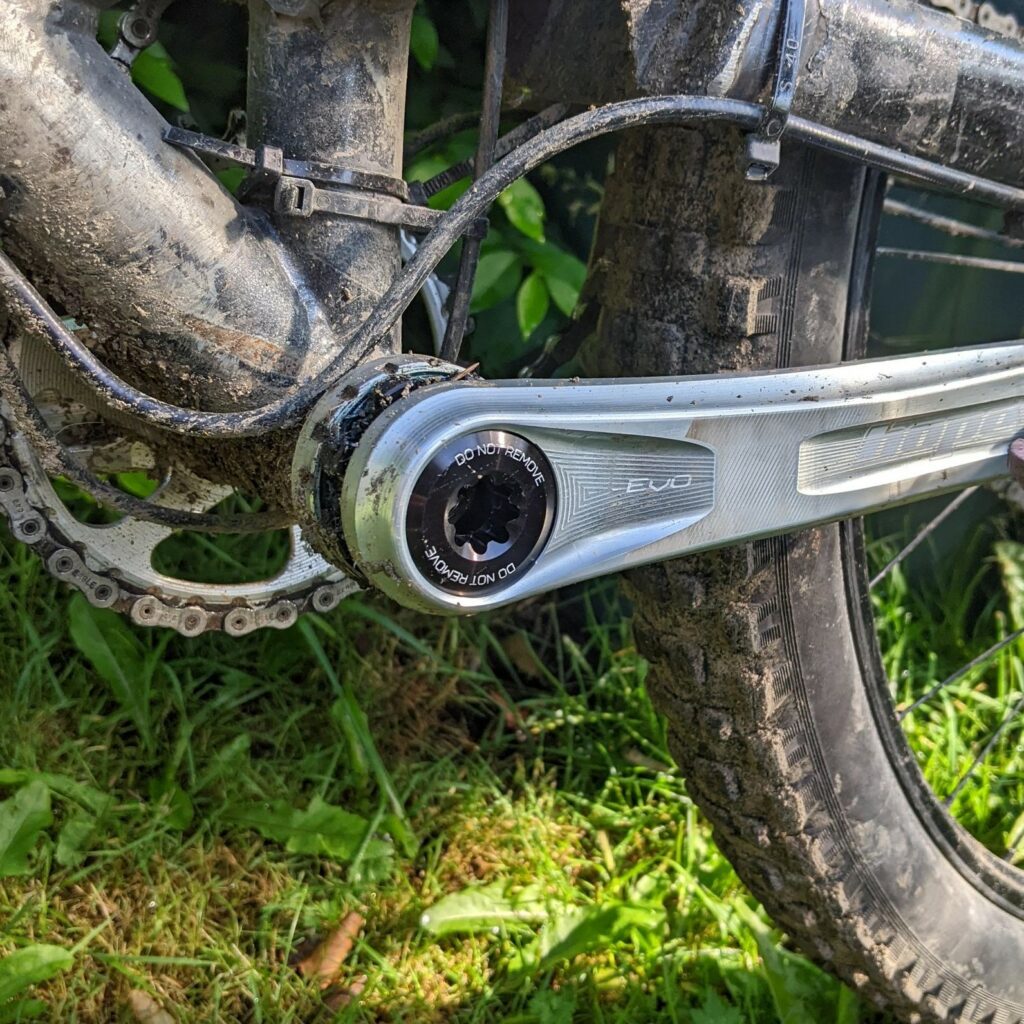
But of course I’m not just jumping in and splashing the cash at random. I’ve built up to this point slowly. I had 172.5mm cranks on my road bike, and was getting knee pain after long rides. I had 170mm cranks on my gravel and mountain bikes which were better than the longer cranks I was used to. I fitted 165mm cranks to my road bike, and was pleased to find that I found it easier to maintain a higher cadence, my position on the bike became more comfortable, and I didn’t appear to lose any power on steep climbs. This is a road bike so I was of course using clippy pedals.
After riding the 155mm cranks I felt that I lost power on climbs, but once I got used to them it’s far less than expected. On smooth seated climbs the higher cadence compensates and I’m climbing at pretty much the same speed. With flat pedals I don’t have the ability to ‘pull up’ with my trailing foot, I’ve got less torque on grunty out-of-the-saddle efforts. With clippy pedals this is not a problem, but I do find that I have to use my gears more carefully to keep my cadence at the right speed.
After more than 6 months swapping between 155 and 165mm cranks, I’m feeling that 160mm or 165mm is best for me regardless of which pedal type I’m using. I expected that I’d prefer a shorter crank with clippy pedals, and a longer crank with flats, but pedal choice really doesn’t seem to make that much difference.
Anyways, that’s enough anecdotal conjecture for now. What does this mean for you? If you’re wondering about your own crank length, how do you begin to work out what’s right for you?
- Cadence is important. Time triallists and track riders often use shorter cranks – this is because you can spin a higher cadence and be more efficient with shorter cranks. If you’re pedalling at a cadence of less than 70rpm then your cadence is not fast enough for any of this to apply. At less than 70rpm each pedalling stroke is like a weight lifting effort, you’re over-working your muscles and building lactic acid. Pedal with a faster cadence and you’ll be more efficient, go faster and suffer less cramp. Because science says so.
- If you’re riding off road, then shorter cranks give you more ground clearance so you get fewer pedal strikes.
- Are you on an ebike? Torque from your pedalling is less important than maintaining a good cadence that keeps your ebike motor at peak power. Your motor will generally be at peak power and efficiency when your legs are spinning at 70-90rpm. It’s easier to maintain this with shorter cranks.
So Chris Froome’s 18% crank to leg length ratio seems a bit extreme – I wouldn’t recommend anyone to ride cranks shorter than 18%. It seems like 18.75% is the magic number, so measure your saddle height, and use the below chart to find your ideal crank length.
——————————————————————————–
This table is where my not-entirely-unscientific thought process has got me:
All measurements in mm. Leg length measured from top of saddle to centre of pedal axle (with that crank at the lowest point) (= saddle top to BBcentre + crank length) Measure it like the pic below:
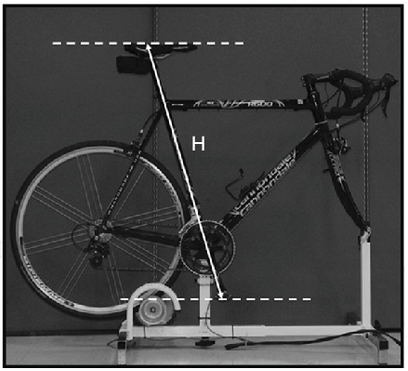
| Crank length | Leg length for 18% | Leg length for 18.5% | Leg length for 19% | Leg length for 19.5% |
| Chris Froome super high cadence efficiency | ideal lower limit (mm) | ideal upper limit (mm) | old-skool pedal mashing | |
| 155mm | 861 | 838 | 816 | 795 |
| 160mm | 889 | 865 | 842 | 821 |
| 165mm | 917 | 892 | 868 | 846 |
| 170mm | 944 | 919 | 895 | 872 |
| 172.5mm | 958 | 932 | 908 | 885 |
| 175mm | 972 | 946 | 921 | 897 |
| 180mm | 1000 | 973 | 947 | 923 |
This isn’t a scientific declaration of fact, this is what I feel is a good place for starting a conversation. If your saddle height is wrong, then this is going to make a mess of your calculations. Also, if you’ve decided that you want to pedal at a slower cadence and that you need longer cranks, then that’s fine by me – but just have a think about it – do you only prefer a slower cadence because your cranks have always been too long?
If you want to have the conversation and even try some different crank lengths, then please pop into shop for a chat. We’re happy to go through the process with you and make sure your bike delivers the performance you need.
